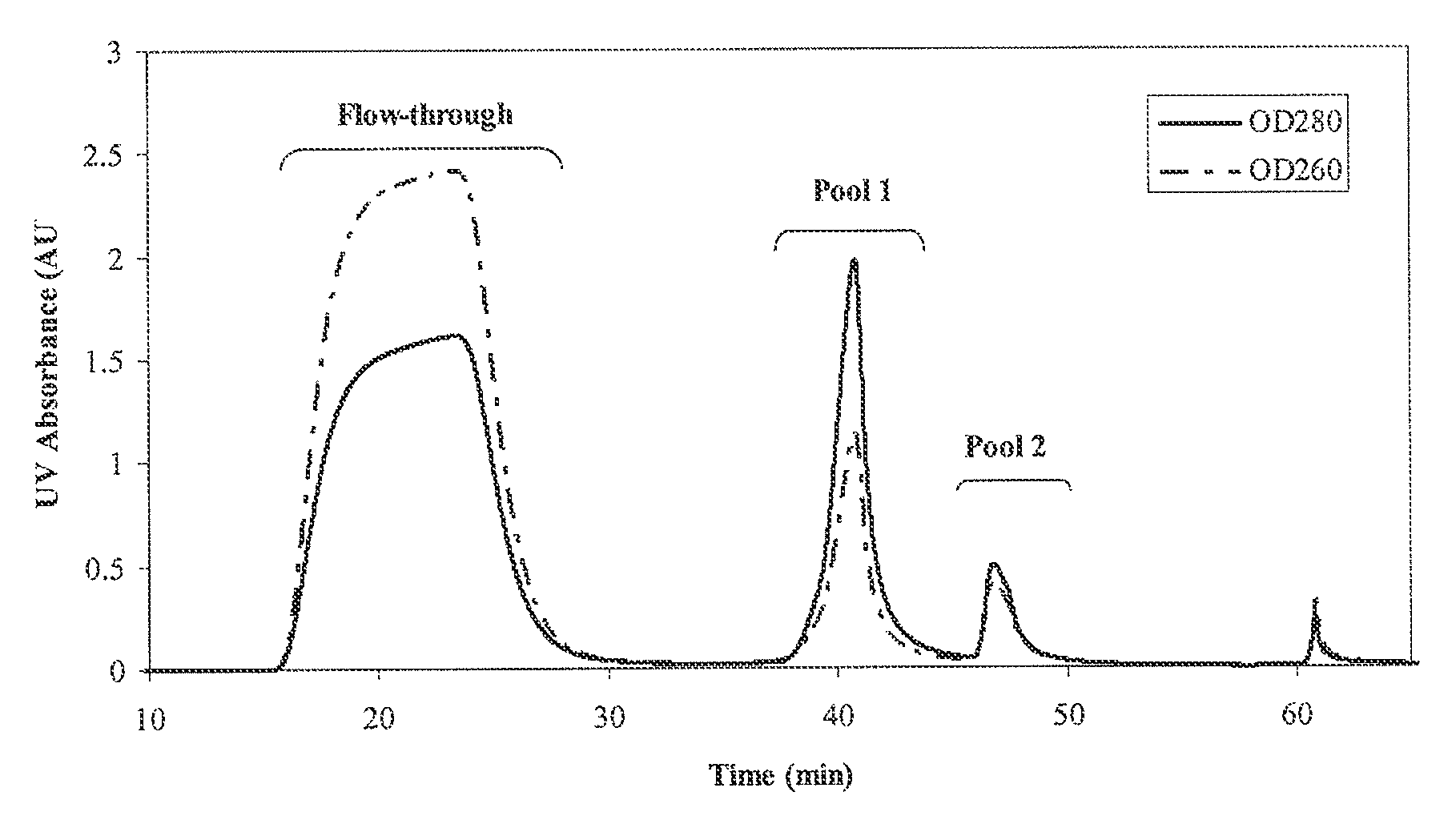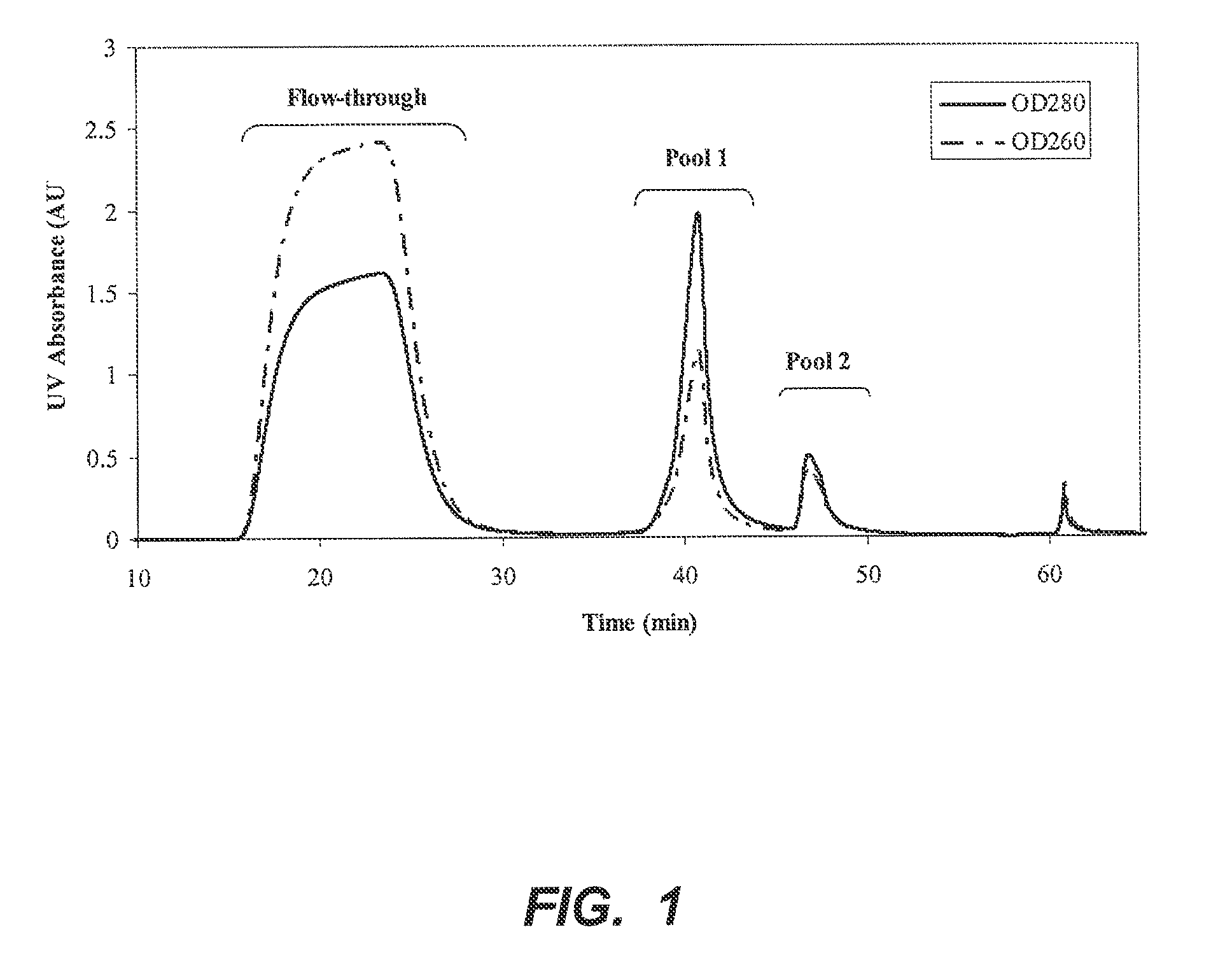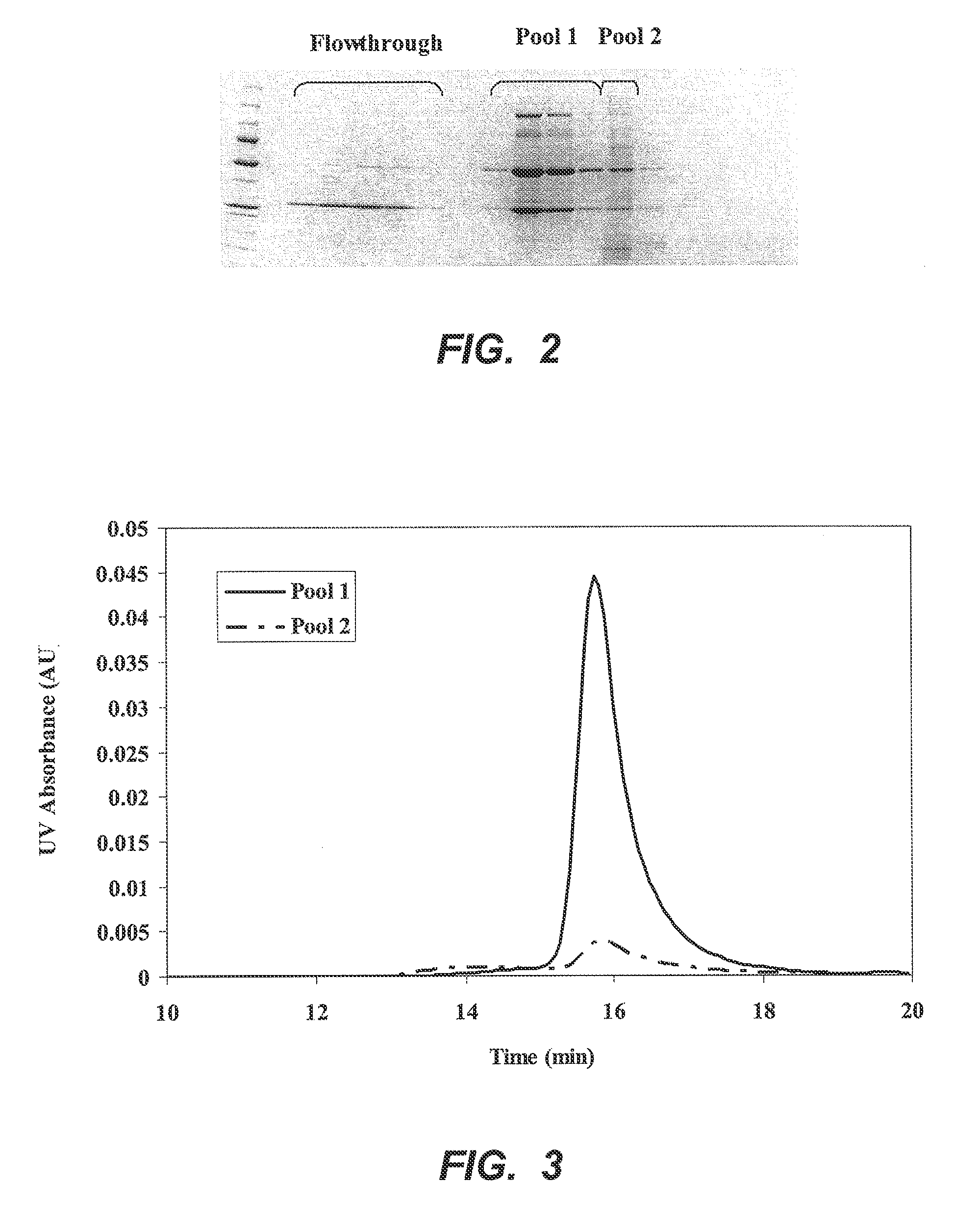Solid phase for mixed-mode chromatographic purification of proteins
a chromatographic purification and solid phase technology, applied in the field of solid phase for mixed-mode chromatographic purification of proteins, can solve the problems of often suffering in the purification of proteins, and especially immunoglobulins, and achieve the effect of high yield
- Summary
- Abstract
- Description
- Claims
- Application Information
AI Technical Summary
Benefits of technology
Problems solved by technology
Method used
Image
Examples
example 1
Preparation of p-Aminohippuric Acid-Functionalized Resin
[0047]UNOSPHERE™ Diol (10 mL), a copolymer of 3-allyloxy-1,2-propanediol and vinyl pyrrolidinone, crosslinked with N,N′-methylenebisacrylamide and with a diol density of 200-300 μmol / mL, was used in the form of spherical beads. The beads were suspended in 10 mL of either 0.1M sodium acetate or water. Sodium periodate was added to a concentration within the range of 50 to 100 mM, and the resulting mixture was incubated at room temperature (approximately 70° F. (21° C.)) for 3-24 hours. The reaction resulted in conversion of the diol groups to aldehyde groups in the range of 150-250 μmol / mL. The resulting aldehyde-functionalized resin was transferred to a 20-mL column where it was washed with 100 mL of water.
[0048]The washed resin was then suspended in 10 mL of 0.05M sodium phosphate buffer at pH 7.0 and mixed with p-aminohippuric acid, and the resulting mixture was incubated in a shaker at 200 rpm for thirty minutes at 37° C. To...
example 2
Binding of Immunoglobulin to p-Aminohippuric Acid-Functionalized Resin
[0049]A column measuring 7 mm in inner diameter and 5.5 cm in length was packed with the p-aminohippuric acid-functionalized resin prepared in Example 1 and equilibrated with 20 mM sodium acetate buffer containing 150 mM NaCl at pH 4.5. A 1.0 mg / mL solution of human immunoglobulin G in this buffer was then applied to the column at a flow rate of 1 mL / min. When the column effluent absorbance at 280 nm reached a value equal to 10% of the value corresponding to the 1.0 mg / mL human IgG solution, thereby indicating 10% breakthrough, the column was washed with equilibration buffer. Binding capacity was determined by multiplying the retention time to 10% breakthrough by the flow rate and the immunoglobulin concentration. The dynamic binding capacity of the immunoglobulin was 40 mg / mL (i.e., 40 mg of immunoglobulin per mL of column packing). Bound immunoglobulin was eluted using 100 mM sodium phosphate buffer, pH 7.0.
example 3
Purification of Immunoglobulin G on p-Aminohippuric Acid-Functionalized Resin from Mammalian Culture Filtrate
[0050]A 0.57 cm×4 cm column of p-aminohippuric acid-functionalized resin prepared as in Example 1 (60 μmoles p-aminohippuric acid / mL beads), was equilibrated with 50 mM sodium acetate, 125 mM NaCl, pH 5.0. Ten milliliters of Chinese hamster ovary (CHO) cell culture harvest, containing 12 mg of mAb 1, an IgG 1 monoclonal antibody, were applied to the column at a linear flow rate of 300 cm / h. The column was then washed with the equilibration buffer until the absorbance at 280 nm reached baseline. At approximately 36 minutes, an elution buffer containing 50 mM sodium phosphate, 50 mM NaCl, pH 6.2, was passed through the column to elute bound antibody, and the pooled eluate obtained with this buffer was collected and designated Pool 1. At approximately 44 minutes, the column was further eluted with 20 mM sodium phosphate, 1M NaCl, pH 7.5, and the eluate obtained with this buffer ...
PUM
| Property | Measurement | Unit |
|---|---|---|
| diameter | aaaaa | aaaaa |
| diameter | aaaaa | aaaaa |
| pH | aaaaa | aaaaa |
Abstract
Description
Claims
Application Information
 Login to View More
Login to View More - R&D
- Intellectual Property
- Life Sciences
- Materials
- Tech Scout
- Unparalleled Data Quality
- Higher Quality Content
- 60% Fewer Hallucinations
Browse by: Latest US Patents, China's latest patents, Technical Efficacy Thesaurus, Application Domain, Technology Topic, Popular Technical Reports.
© 2025 PatSnap. All rights reserved.Legal|Privacy policy|Modern Slavery Act Transparency Statement|Sitemap|About US| Contact US: help@patsnap.com



